How Sports Teams Make Money: 6 Revenue Streams Explained
Sports teams operate within a complex ecosystem of revenue streams that collectively ensure sustainability and potential for profit. The influence of fan loyalty translates into cash flow. We are talking from purchasing tickets and merchandise to tuning into games religiously. Fans are integral to a team’s financial performance.
Advertisers pay big money to get in front of these fiercely loyal fan bases in hopes of building more brand recognition and revenue. In today’s economy, the hottest commodity is attention and sports have long kept the public’s gaze fixated.
Key Takeaways
- Sports teams accrue income from a diversified portfolio including fan-based and corporate revenue channels.
- Broad media coverage amplifies team visibility and opens significant broadcasting revenue.
The financial strategies of sports teams extend beyond fan interaction into lucrative partnerships with businesses and advertisers from various industries. Let’s explore how sports teams make money.
MORE: LEARN HOW THE NFL MAKES IT’S MONEY
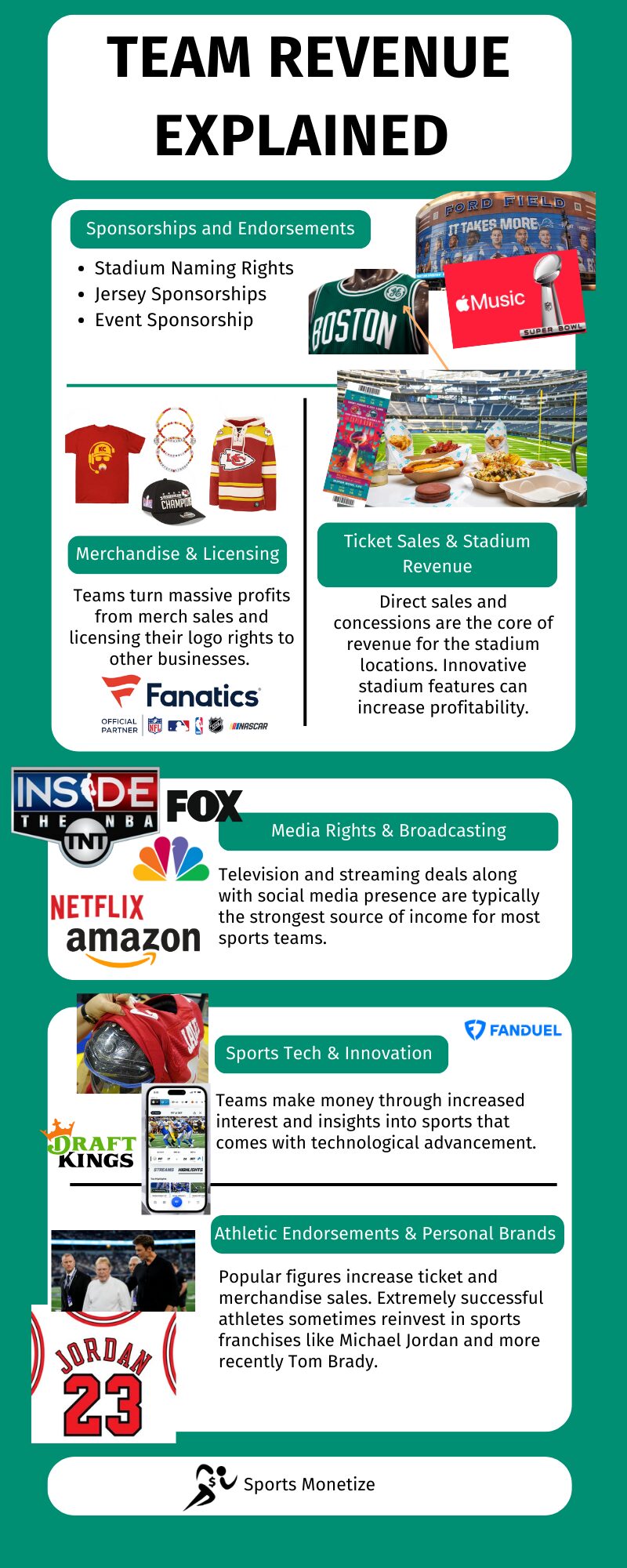
1. Sponsorships and Endorsements
In the competitive world of sports, sponsorships and endorsements are crucial revenue streams for teams and athletes. These deals can range from brand partnerships to media rights agreements, infusing significant funds into the sports industry.
Types of Sponsorships and Endorsements in Sports
Sponsorship contracts come in various forms, such as naming rights for stadiums and team jerseys. For example, your team’s arena might be named after a corporate sponsor, capitalizing on brand visibility. Jersey sponsorships, like the NBA’s patch program, allow sponsors’ logos to be displayed on game-day apparel, offering exposure during broadcasts. Endorsement deals enable athletes to promote products or services, typically through media campaigns or personal appearances.
- Stadium Naming Rights: Your team’s home venue is branded with a sponsor’s name.
- Jersey Sponsorships: Sponsors’ logos appear on your team’s game-day outfits.
- Event Sponsorship: Brands pay to sponsor specific events like the Olympics or SuperBowl
Examples of Successful Sponsorship and Endorsement Deals
- Los Angeles Lakers: Arena naming rights for 20 years – Staples Center now Crpto.com Arena.
- Miami Heat: Endorsement by American Airlines for the arena name.
Key Factors in Negotiating and Securing Sponsorship and Endorsement Deals
Your team must effectively leverage its brand value and market potential to negotiate deals successfully. The size and passion of your fan base, media coverage, and the team’s performance impact the attractiveness to potential sponsors.
- Brand Leverage: Maximize your team’s brand value during negotiations.
- Market Potential: Utilize the fan base’s size and engagement persuasively.
- Team Performance: Highlight past successes and future potential to sponsors.
2. Merchandise and Licensing
Merchandise and licensing are crucial avenues through which sports teams generate substantial revenue. They capitalize on fan loyalty, driving up sales and expanding the teams’ market influence.
Official Team Merchandise in Generating Revenue
Your favorite sports teams, like the Knicks or the Yankees, rely heavily on official merchandise sales to boost their revenue. Jerseys, caps, and other memorabilia adorned with team logos create an emotional connection with fans which ultimately prompts purchases.
For instance, when you buy an official Nike jersey of your favorite player, a portion of that sale contributes to your team’s financial strength. Merchandise sales play a significant role in a team’s valuation.
Licensing Agreements in Expanding a Team’s Brand
Licensing agreements allow teams to broaden their market reach. By granting permission to manufacturers and retailers to produce and sell team-branded merchandise, your team taps into an extensive network. These deals often involve intricate negotiations, ensuring the products meet brand standards and appeal to you. This strategy not only diversifies team income but also furthers market penetration, as seen with lucrative partnerships like those between Nike and various NBA teams.
Successful Merchandise and Licensing Deals in Sports
Successful merchandise and licensing deals have led to impressive valuations and revenue streams for teams. The NBA’s deal with Nike has significantly elevated the league’s branding, with team-branded gear being highly sought after by fans worldwide. The New York Yankees, known for their iconic logo, have seen their brand flourish domestically and internationally, translating into high merchandise sales. Such deals exemplify how powerful and profitable merging sports teams with global brands can be.

3. Media Rights and Broadcasting
Television and streaming deals are the bread and butter of sports revenue. Sports teams easily make the bulk of their money from massive broadcasting deals with several corporations.
Television and Streaming Deals in Sports
Television contracts have long been a cornerstone for sports revenue. For instance, the NFL secured lucrative television deals amounting to over $100 billion, ensuring a steady income stream from 2023 to 2033. Similarly, the NBA extended its agreement with broadcasters for $24 billion in 2014. These figures emphasize the massive value TV rights command in sports.
Streaming platforms have joined the fray, further elevating the market. Services like Amazon Prime have secured rights for airing sports events, tapping into the digital consumer base. The MLB partnered with YouTube to stream weekly games, broadening its reach beyond traditional broadcast methods.
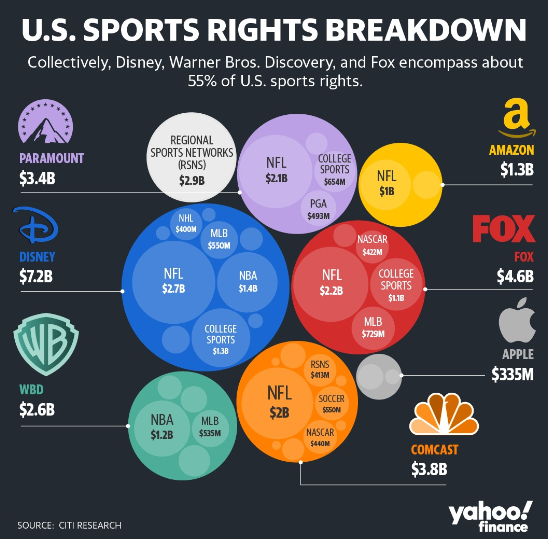
Sports Broadcasting on Social Media
Social media platforms and digital services have reshaped how you engage with sports content. Platforms such as Twitter, Facebook, and YouTube now actively engage in broadcasting sports. They not only offer live games but also deliver highlights and player interactions, satisfying the appetites of fans who crave more than just the live event.
These online platforms contribute to increased viewership and subsequently sports revenue. For example, the NBA along with prominent players and teams has a wide presence on social media, enhancing its global footprint through these digital channels. The engagement rates are crucial for attracting advertisers who desire access to a dedicated and sizeable audience.
The monetary exposure expands to sports influencers, reporters, and media outlets being able to leverage their content for advertising dollars and exclusive deals with organizations like the NBA or NFL.
Innovative Media Rights Deals in Sports
Teams and leagues continuously innovate to maximize broadcasting revenues. The NFL’s deal with Amazon to stream Thursday Night Football games represents a breakthrough in exclusive streaming rights in sports. Meanwhile, the NBA’s deal with Turner and ESPN incorporates flexibility to adapt to changing viewing habits, showing an awareness of the evolving market.
In 2018 MLB established a partnership with Facebook allowing for exclusive game broadcasts, demonstrating the league’s acknowledgment of the platform’s significant user base. These examples underline the creativity and adaptability of sports entities in optimizing deals amidst a dynamic market.
4. Ticket Sales and Stadium Revenue
Massive investments are put into stadiums which naturally requires diversified teatics for recouping a solid return on investment for all parties involved.
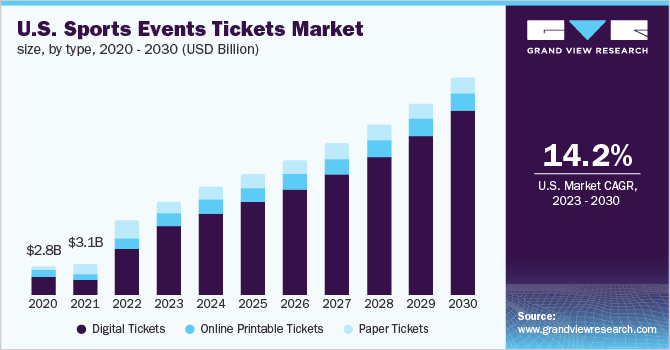
Live Attendance
Live attendance is a cornerstone of sports team monetization. When you buy a ticket to a game, you’re contributing to a team’s primary revenue stream. Stadiums are assets designed to hold tens of thousands of fans, with NFL stadiums often having capacities exceeding 70,000. Attendance is not just about numbers; it’s a measure of a team’s pull and potential for fan engagement that sponsors and advertisers value. Each ticket sold is an additional opportunity for selling concessions, merchandise, and enhancing the overall matchday experience.
In-Stadium Advertising and Sponsorship
Your experience at a game is enveloped by strategic in-stadium advertising and sponsorship deals that are integral to a team’s income. These can be seen through naming rights of the stadium itself or advertising spots throughout the venue. For instance, securing a naming-rights deal can lead to a significant one-time payment followed by ongoing revenue streams based on contract specifics. Sponsors align themselves with teams to gain visibility among the loyal fanbases, and teams profit from the advertising spaces sold within their venues.
Strategies for Increasing Ticket Sales and Maximizing Stadium Revenue
To boost ticket sales and stadium revenue, sports teams implement various strategies. Teams may introduce dynamic pricing models for tickets, adjust prices in real-time based on demand to maximize sales. Loyalty programs and exclusive benefits also incentivize repeat attendance. When considering stadium assets, luxury boxes and premium seating can generate higher ticket revenues. During marquee events like the Super Bowl, a team can command premium pricing due to the high demand and exclusivity of the experience. Your engagement with the team, be it through direct ticket purchases or participation in sponsored promotions, plays an instrumental role in amplifying stadium revenue.
Sports Stadium Concessions
Stadiums make a lot of money from the food and drinks they sell during games. It’s not just about the action on the field – the whole experience matters. Fans love the variety of snacks and meals available, making concessions a big deal for sports teams. Whether it’s classic game-day treats or fancy options, the food offerings are a smart way to keep fans happy and bring in cash. So, when you smell those delicious scents around the stadium, it’s not just about good food; it’s also a key ingredient in the money game for sports teams worldwide.
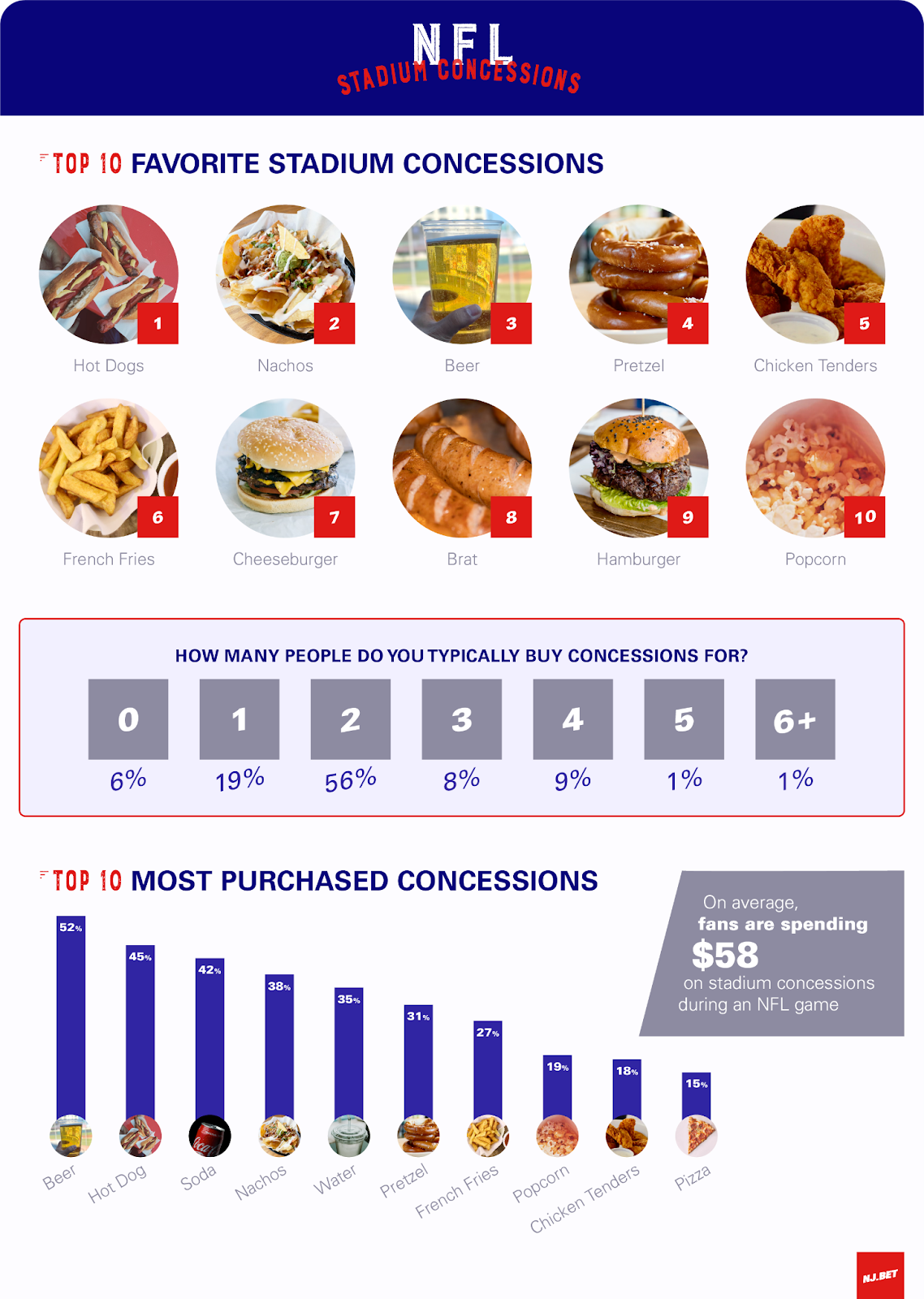
5. Athlete Endorsements and Personal Brands
Athletes leverage their prominence and public image to establish personal brands, which in turn attract lucrative endorsement deals that significantly contribute to their income. Understanding how much players get paid extends behind standard contracts for games played.
The initial benefit goes to the athlete but the teams that house these talented players see increased revenue from merchandise and ticket sales. Getting popular talent is ultimately a business move for many franchises.
A recent example of athletic popularity leading to profitability would be the NBA game featuring Lebron James and his son, Bronny, both on the floor together in Lakers uniforms.
How Athletes Build Their Personal Brands to Attract Endorsements
To attract sponsorships, athletes must craft a marketable personal brand. This involves consistent performance on the field, which lays the foundational appeal for both fans and brands. Athletes like NBA stars or NFL players often engage in community service and charitable activities, reinforcing a positive public persona. Your brand’s personality, values, and unique traits must align with potential sponsors’ target markets to make you an attractive investment.
For instance, consider how a breakout NFL player might use media coverage and player statistics to highlight their on-field achievements. Coupled with a clean, relatable off-field image, they become highly appealing to sportswear companies for endorsement contracts.
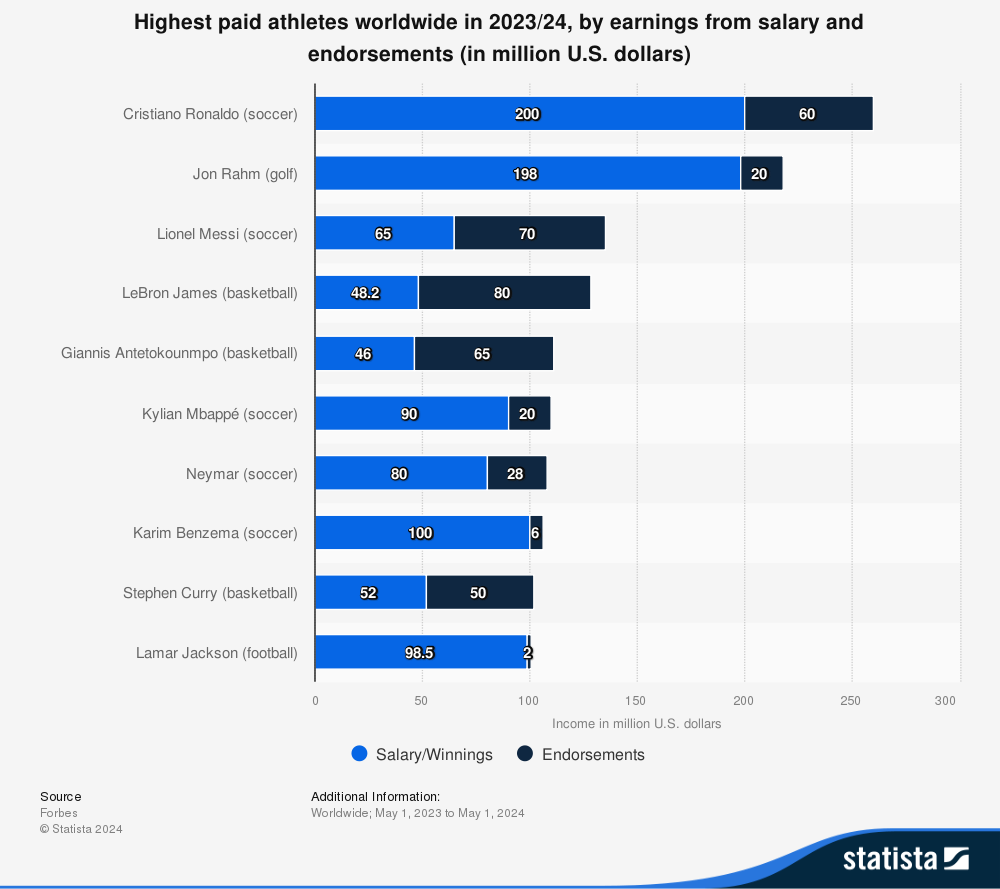
Athlete Endorsement Deals
Several factors define a successful endorsement deal: the athlete’s popularity, alignment with the brand, and the monetary value of the deal itself. For example, Michael Jordan’s lifelong deal with Nike through the Jordan Brand has become a benchmark in endorsement success, built upon his stellar basketball career and charismatic appeal. In the NBA, LeBron James’ deal with Nike, worth over a billion dollars, showcases how top athletes negotiate agreements that rival their player contracts in value.
- Serena Williams with Nike: Showcases dominance in tennis and empowerment.
- Cristiano Ronaldo with Nike: Emphasizes elite performance and global appeal.
These partnerships are more than just monetary exchanges; they are strategic alignments between the athlete’s personal brand and the company’s marketing objectives.
Social Media & Athlete Branding
Social media has revolutionized how you, as an athlete, can cultivate a personal brand and, subsequently, how you monetize it. Platforms like Instagram and Twitter allow direct engagement with fans, increasing personal connections and authenticity. This can enhance your brand’s value and desirability to sponsors. Social media analytics, such as follower count and engagement rates, provide measurable data that potential sponsors use to gauge the value of an investment in popular athletes.
For example, savvy NBA players utilize social media to showcase their lifestyles, training regimens, and personal narratives, which can amplify their appeal to both existing and potential sponsors. Regular, relatable content keeps followers engaged and can increase the attractiveness of your personal brand to companies looking for athlete endorsers.
The Rise of the Coach-Celebrity
Gone are the days when coaches were simply seen as sideline tacticians or locker-room motivators. Head coaches, coordinators, and assistant coaches are increasingly building their own personal brands, leveraging their fame and expertise to create new income streams and business opportunities.
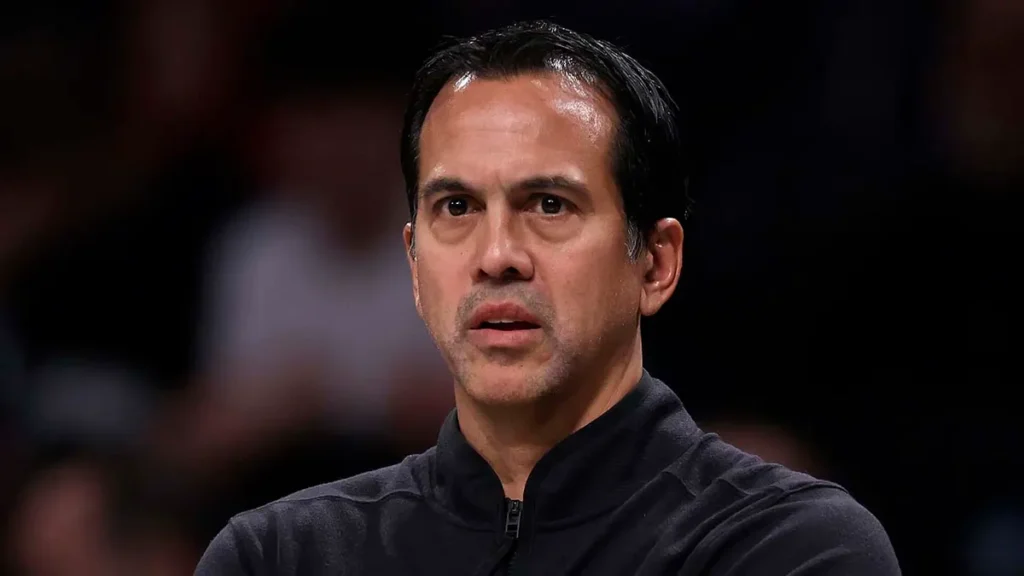
This trend is being driven by a number of factors, including the rise of social media, the increasing popularity of sports,and the growing influence of athletes. With fans hungry for more behind-the-scenes access and insights, coaches who can cultivate a compelling personal brand are finding themselves in high demand.
Athletic Reinvestment
The full circle moment for sports teams looking to capitalize on super athletes comes when players retire and desire to reinvest in the sports industries themselves. Examples induce Magic Johnson with the Commanders, Jordan with the Hornets, and most recently Tom Brady with the Raiders.
Money earned from years of professional play can be placed right back into sports franchises in exchange for ownership share or equity.
6. Sports Technology and Innovation
In the realm of sports, recent advancements in technology and innovation are playing crucial roles both on and off the field. They’re reshaping how teams operate and engage with their fan base, opening up new revenue streams.
There are levels to sports technology leading to dollars. On one hand you can look at mobile applications as a more direct source of income and on the other hand it’s the technological advancement of the fan experience that ultimately drives increased ticket and merchandise sales.
Emerging Technologies That Are Changing the Sports Landscape
Recent innovations in sports technology are helping teams enhance player performance and game strategies. Wearables, such as GPS trackers and heart rate monitors, allow teams to gather real-time data on player fitness and fatigue levels. In the NFL, for example, RFID chips embedded in shoulder pads track player movements during games, offering insights to refine plays and improve overall strategy. AI and machine learning are also becoming pivotal, analyzing vast amounts of data to optimize training and reduce injury risks.
The Impact of Technology on Fan Engagement and Monetization
Your experience as a fan has transformed with technology. The surge in online platforms provides interactive and personalized fan experiences. Technologies such as augmented reality (AR) and virtual reality (VR) immerse you in games and events, bridging the gap created by the COVID-19 pandemic. This digital engagement is a goldmine for teams, as they can leverage data analytics to enhance marketing strategies and create targeted promotions, thereby increasing revenue streams.
Fan Engagement and Monetization Technologies:
- AR/VR: Immersive experiences at home or in-stadium
- Mobile Apps: Personalized content and exclusive in-app purchasing offers
- Social Media: Engaging with fans and providing real-time updates
Examples of Innovative Technologies Being Used in Sports Today
Today, you can witness numerous examples of innovative tech in the sports sphere. The industry has embraced sports betting as a significant source of revenue, integrating it with live games. You’ll also find advanced stadium technologies, where NFL and other league teams facilitate seamless mobile ticketing, in-app purchases, and even in-seat delivery services.
Innovative Stadium Technologies:
- Mobile Ticketing: Contactless entry into games
- In-Seat Delivery Services: Food and merchandise ordered and delivered to your seat
- High-density Wi-Fi: Enhanced connectivity for fans to interact online during games
The integration of these technologies offers you a more engaging and seamless sports experience while providing teams with robust tools to bolster their financial health.
Future Trends and Opportunities
In this rapidly evolving sector, your understanding of the ways in which sports teams can capitalize on new trends and revenue channels is essential.
Emerging Trends in Sports Monetization
With innovations in technology, sports teams are finding novel ways to monetize their fanbase and operations. The integration of augmented reality (AR) and virtual reality (VR) not only enhances fan experiences but creates new advertising opportunities. For example, wearable tech allows fans to experience games in a more interactive way while opening up new avenues for sponsorships. Meanwhile, the rise of eSports has unveiled a significant market where traditional sports teams can invest and create new revenue streams by owning or sponsoring competitive gaming teams.
New Opportunities for Revenue Generation in Sports
Your team can explore partnerships with tech companies, tapping into data analytics platforms to optimize marketing strategies, merchandise sales, and fan engagement. These technologies enable personalized fan experiences, potentially increasing merchandise and ticket sales. Furthermore, the use of blockchain technologies is being explored to authenticate merchandise, which can reduce counterfeit sales and boost revenue. Also, teams considering an environment-focused approach may offer sustainable merchandise, addressing a growing demand and possibly commanding premium pricing.
Predictions for the Future of the Sports Business Industry
The sports industry is poised to see significant growth with the influx of new investments. Joint ventures in real estate developments around sporting arenas can lead to sustained income through retail and office space rentals. Meanwhile, strategic partnerships, like those previously engaged by FTX to earn naming rights, indicate the potential for leveraging brand visibility in conjunction with emerging financial markets. This trend is likely to continue as the value of sports branding in diverse markets becomes increasingly recognized. Keep your eye on new platforms for content distribution, as they are expected to become major players in broadcasting rights negotiations, shifting the landscape of how you watch and interact with live sports events.
Frequently Asked Questions
Conclusion
In the sports industry, your team’s financial success is closely tied to a diverse array of revenue streams. The market knowledge you possess plays a crucial role in maximizing these streams. Tickets to games, merchandise sales, and broadcasting deals are key components that significantly contribute to your overall revenue.
- Ticket Sales: These are fundamental; your team’s ability to sell out games can provide a steady income.
- Merchandise: Selling branded apparel and items attracts profits and enhances fan loyalty.
- Broadcasting Rights: These deals can be immensely lucrative, often comprising a substantial portion of income.
Moreover, sponsorships and advertising play an essential role. Your team’s brand is an asset; a stronger brand attracts more lucrative deals. The following are practical revenue sources:
- Sponsorship Deals: High-profile partnerships with companies provide both financial support and brand visibility.
- Stadium Naming Rights: Companies pay handsomely to have their names on your venue.
- Advertising: In-stadium and across various media platforms.
You must also consider the long-term strategies including player transfers and the development of your sports facility. Player transactions can sometimes result in significant one-time profits from transfer fees. Investing in your sports facilities can enhance the fan experience, potentially leading to increased revenue in several of the streams listed above.
Remember, your teams are more than sports entertainers; they are businesses within a highly competitive market. You hold the key to navigating the intricacies of this industry and ensuring that your team remains financially healthy and competitive.

